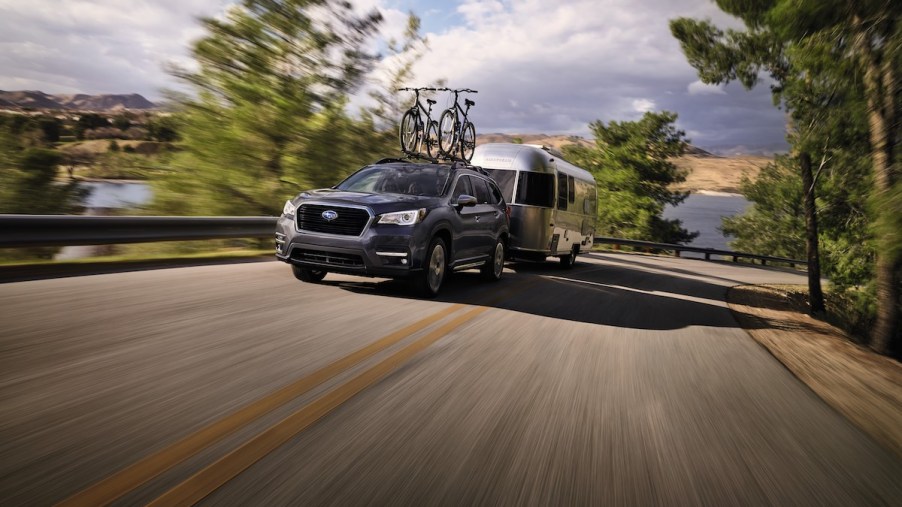
Is Hill Descent Control Useful at All?
Automobiles have been around for over a hundred years. They’re continually upgraded with the latest safety technology to offer a reliable but safe car, truck, or SUV to drive.
One of the newest features most SUVs now have has been around for a while. The hill descent control originated with a Land Rover Vehicle, but it’s seen in many SUVs today. MotorTrend explains what this feature is and how it works.
What is hill descent control, and how does it work?
Land Rover first introduced this technology, in America, back in 2002 with its Freelander model. Developers created this feature to aid drivers when traversing hills in rough situations, such as a snow-packed hill.
Normally, a driver would carefully descend a slippery hill, applying the brakes carefully and steering, as needed, to keep the vehicle from going too fast to the bottom. If the vehicle went down at a high speed, an accident would more likely occur because the SUV would be harder to control.
This driver’s assist feature would use the traction control and anti-locking brake system to keep the vehicle going at slow speeds while the driver concentrates on steering and not on the brake and gas pedals.
What other SUVs have this technology?
Nowadays, many more automakers are utilizing this technology, some giving it their own names. For instance, Hyundai offers it in their SUVs, but they call it their downhill brake control feature. Jaguar also has what they call All Surface Progress Control.
Mercedes-Benz has its Downhill Speed Regulation for their SUVs. Porsche got in on this type of technology as well. They created their version of hill control to use as an option for their SUVs. Finally, Volkswagen also developed its hill descent assist feature that offers the same as the others.
Other sport utility vehicles known to have this feature include Alpha Romeo Stelvio, Genesis G80, Lincoln Aviator, Lincoln Navigator, Toyota Highlander, and Toyota Rav4. You can also get it with any of the BMW X-series of SUVs, the Subaru Outback, and Subaru Ascent.
With each SUV, the feature works pretty much the same. You put it in a lower gear, turn on the descent control, and the system operates the brakes and traction control for you. Some come with a slight variation, like adjusting the speed to stay under five mph.
How safety features have grown over the years
As reported by The AA website, some of our commonplace items have on vehicles today came as safety features originally. Wiper blades, rear-view mirrors, headrests, and turn signals are a few examples of what used to be known as a safety feature. But now they’re standard pieces of a car.
The 1950s brought airbags, seat belts, and disc brakes to our vehicles to prevent car crashes. Now, they, too, are a normal part of a car. Seatbelts were just an option to use in that decade, though. The 1960s made seatbelt use mandatory in cars. The late 60s brought us anti-locking brake systems that are a popular feature of our modern vehicles.
Side-impact and knee airbags came in the 90s, along with electronic stability control. When we reached the new millennium, safety features became more pedestrian-focused. Today, we have automated systems and backup cameras, to name just a few.
Hill descent control is one of many newer features that SUVs are adopting today to make driving a family around safer. Having the ability to control your speed as you’re going down a slippery slope keeps the odds of safety in your favor.


